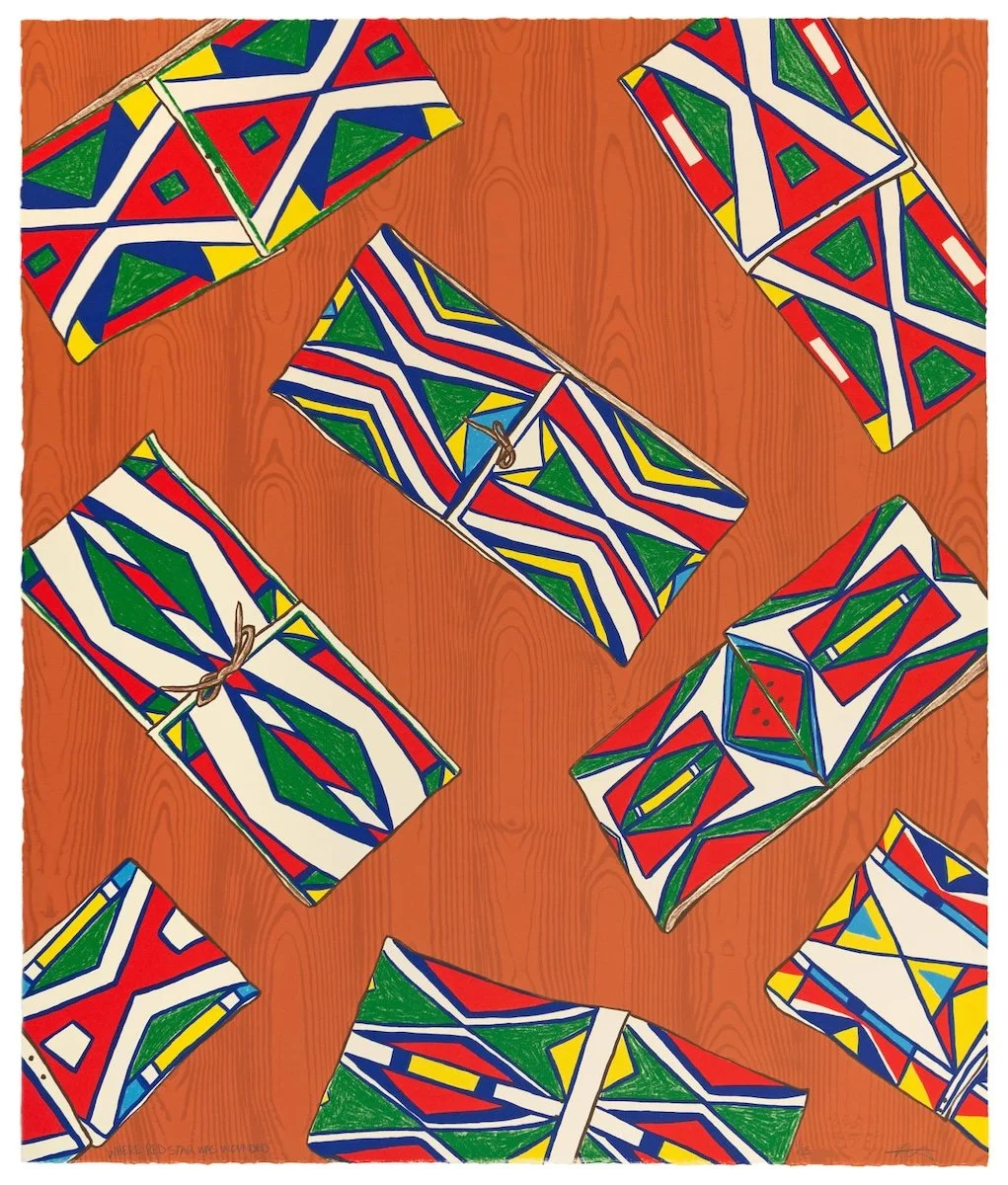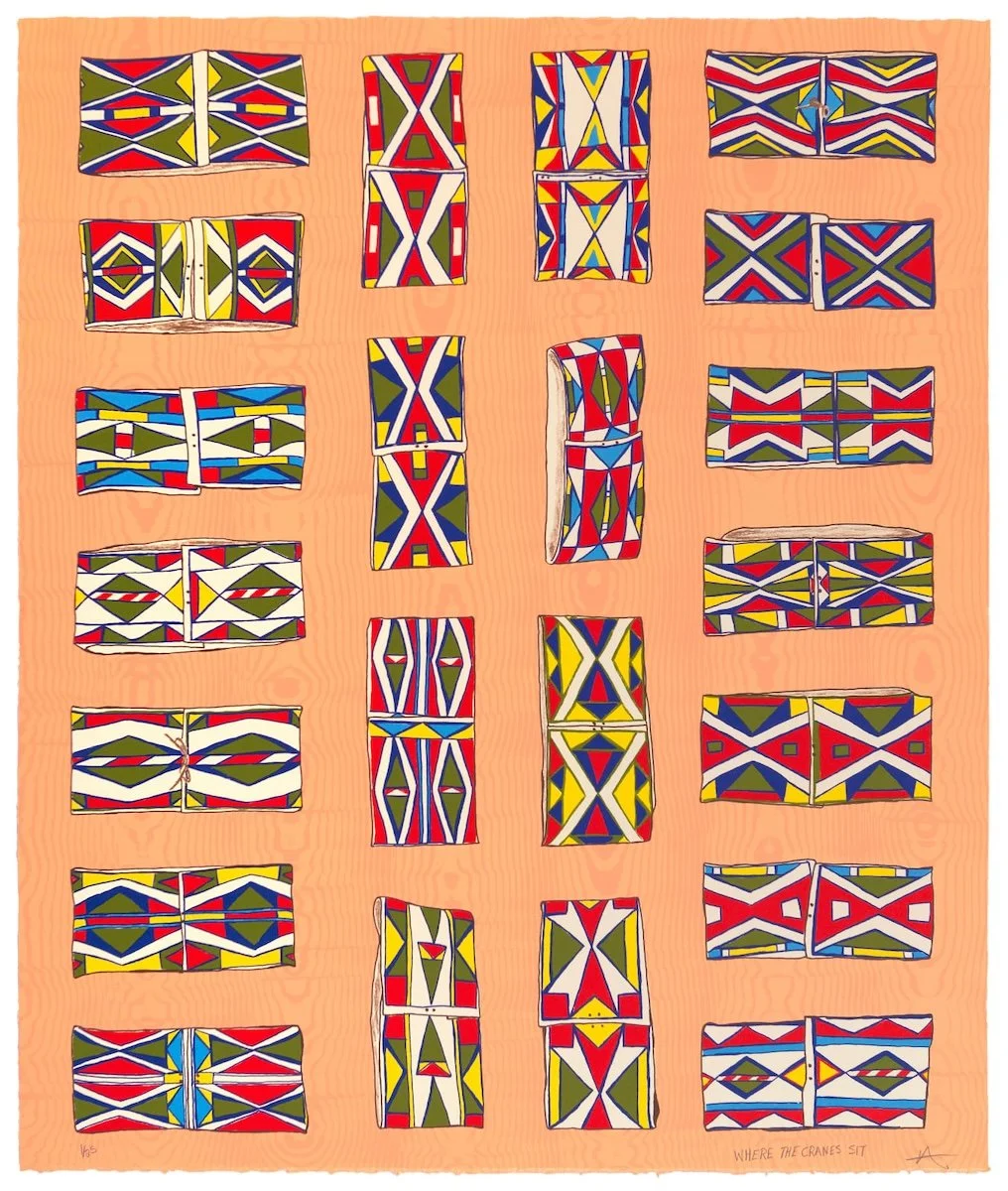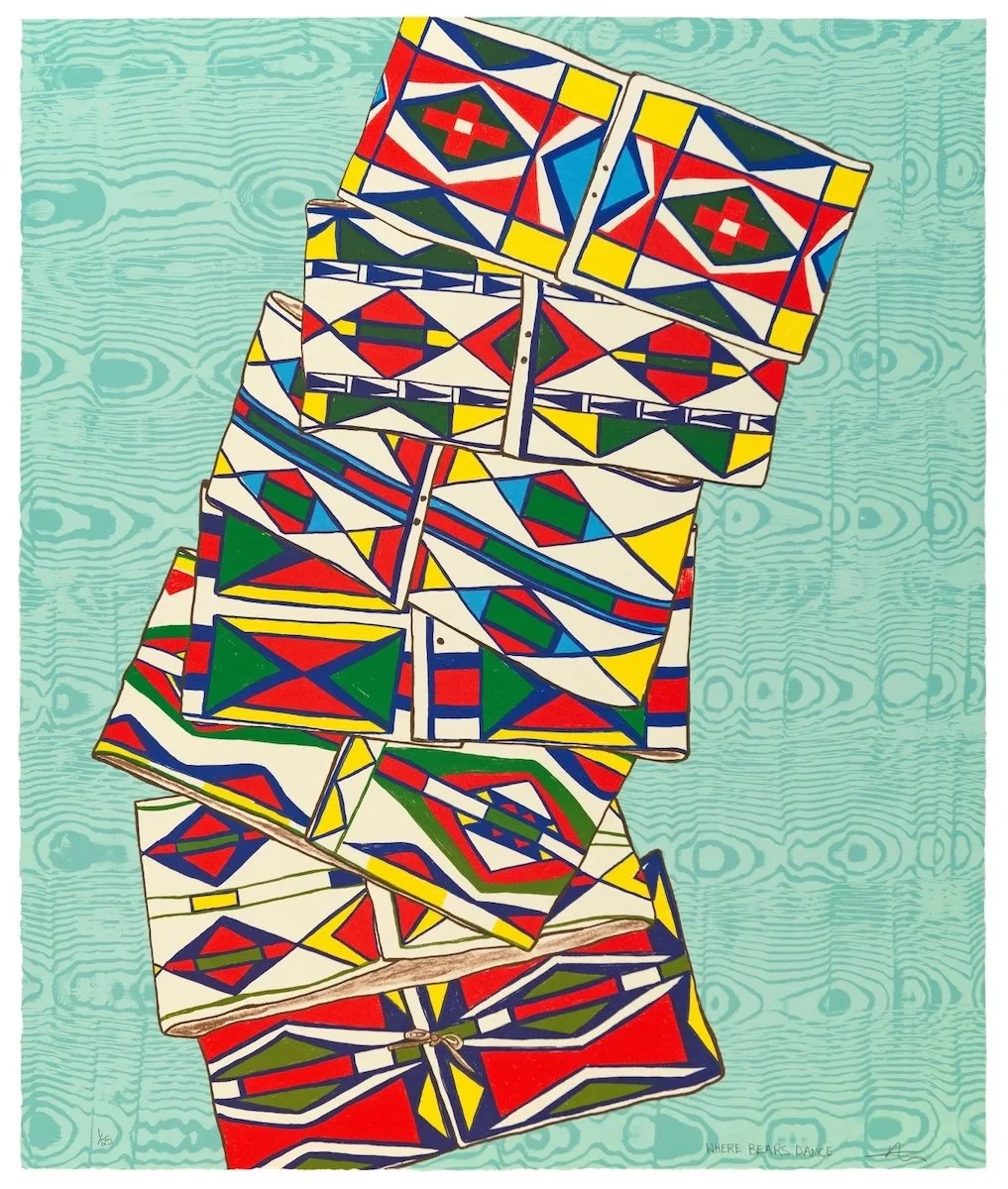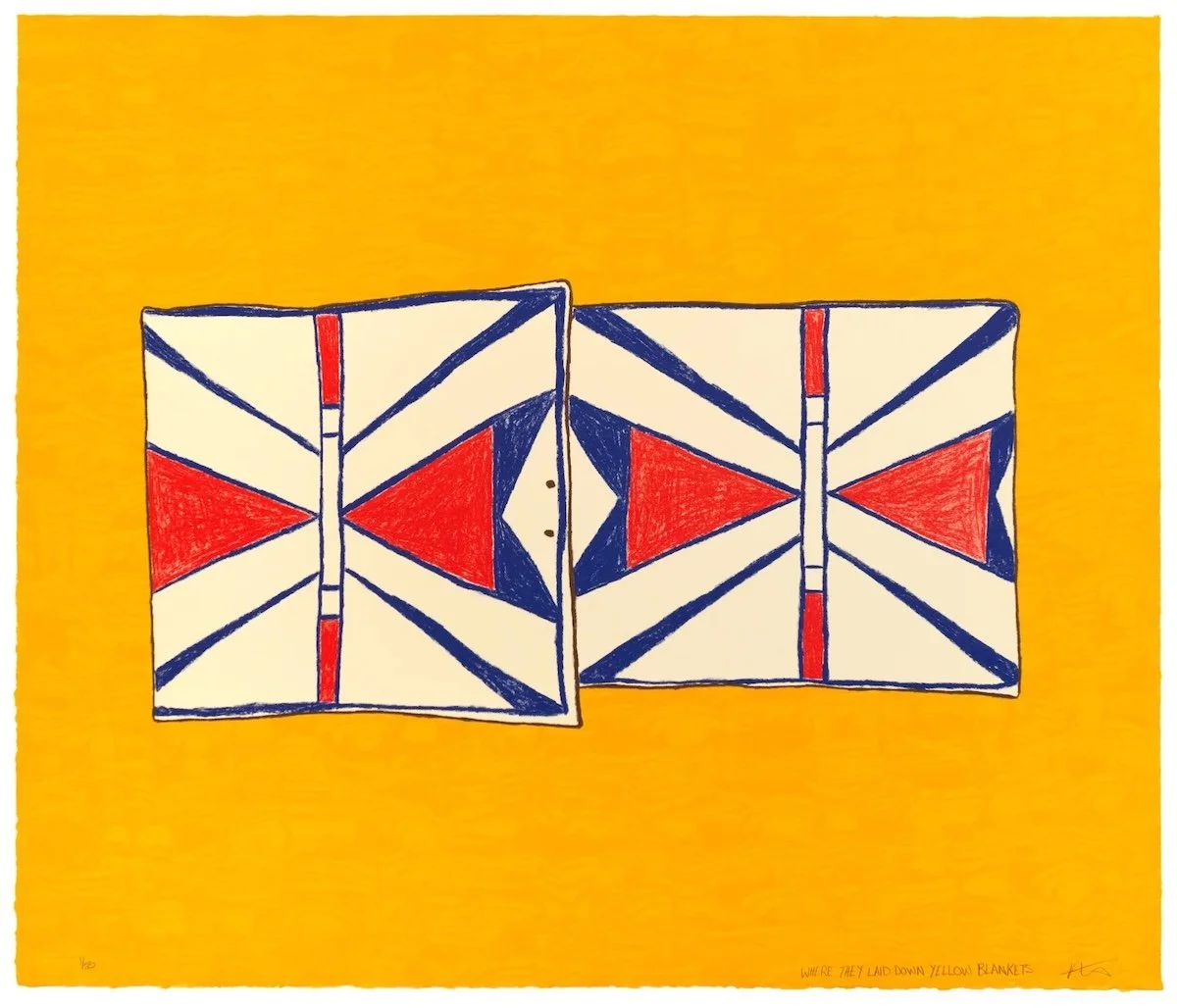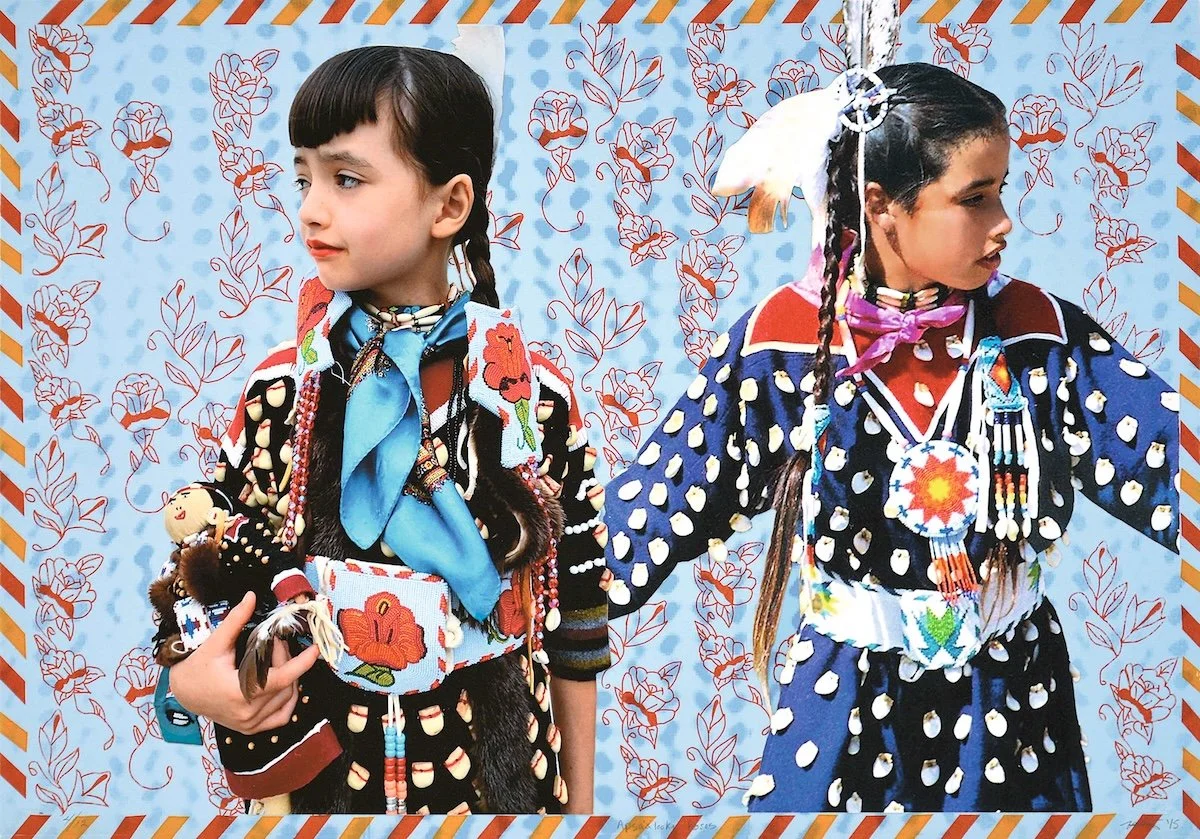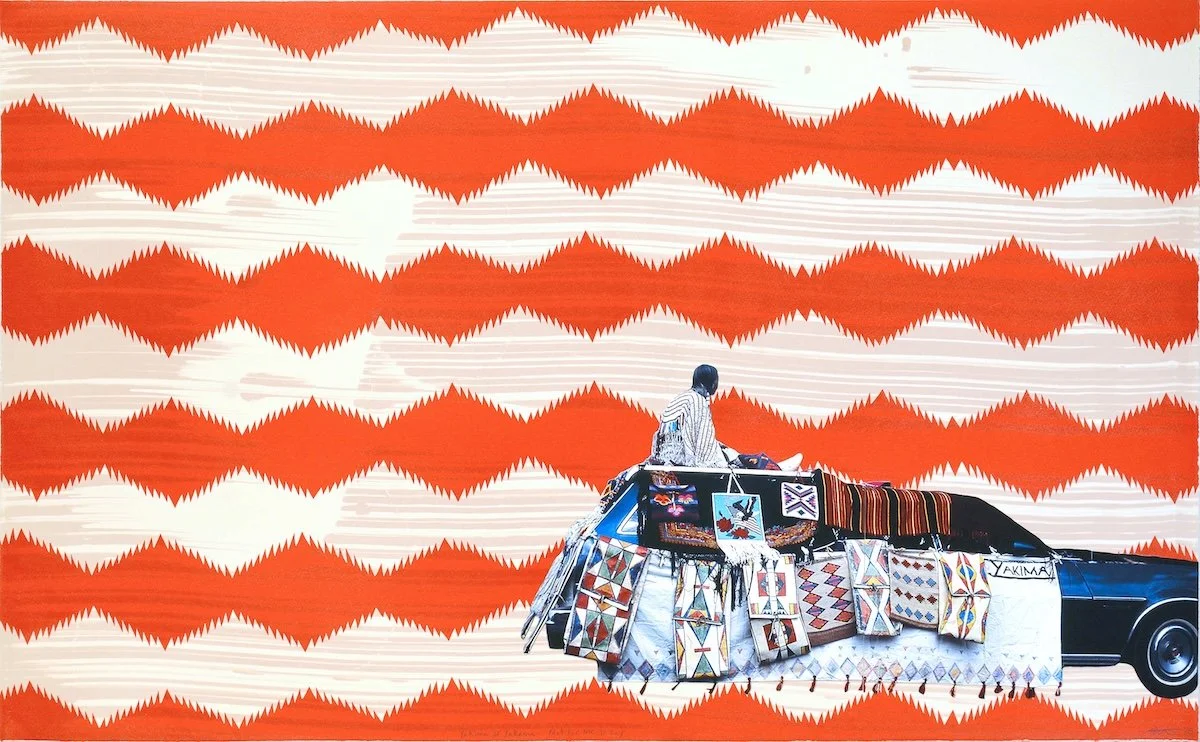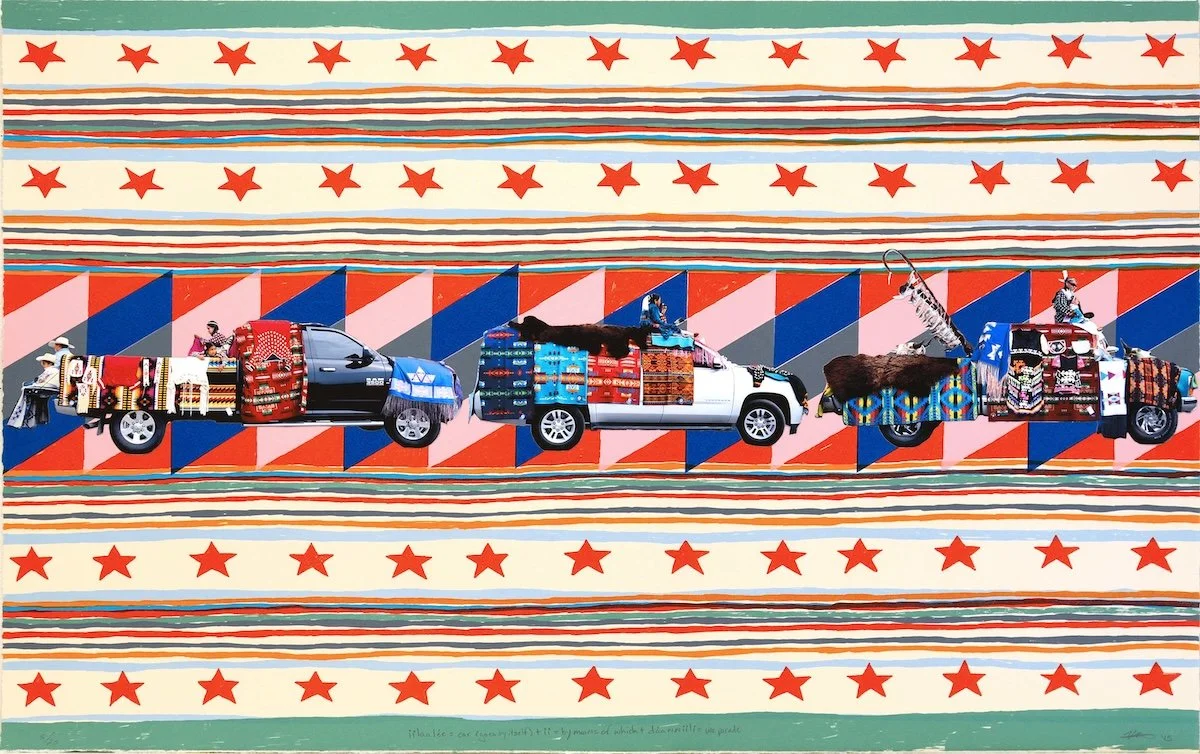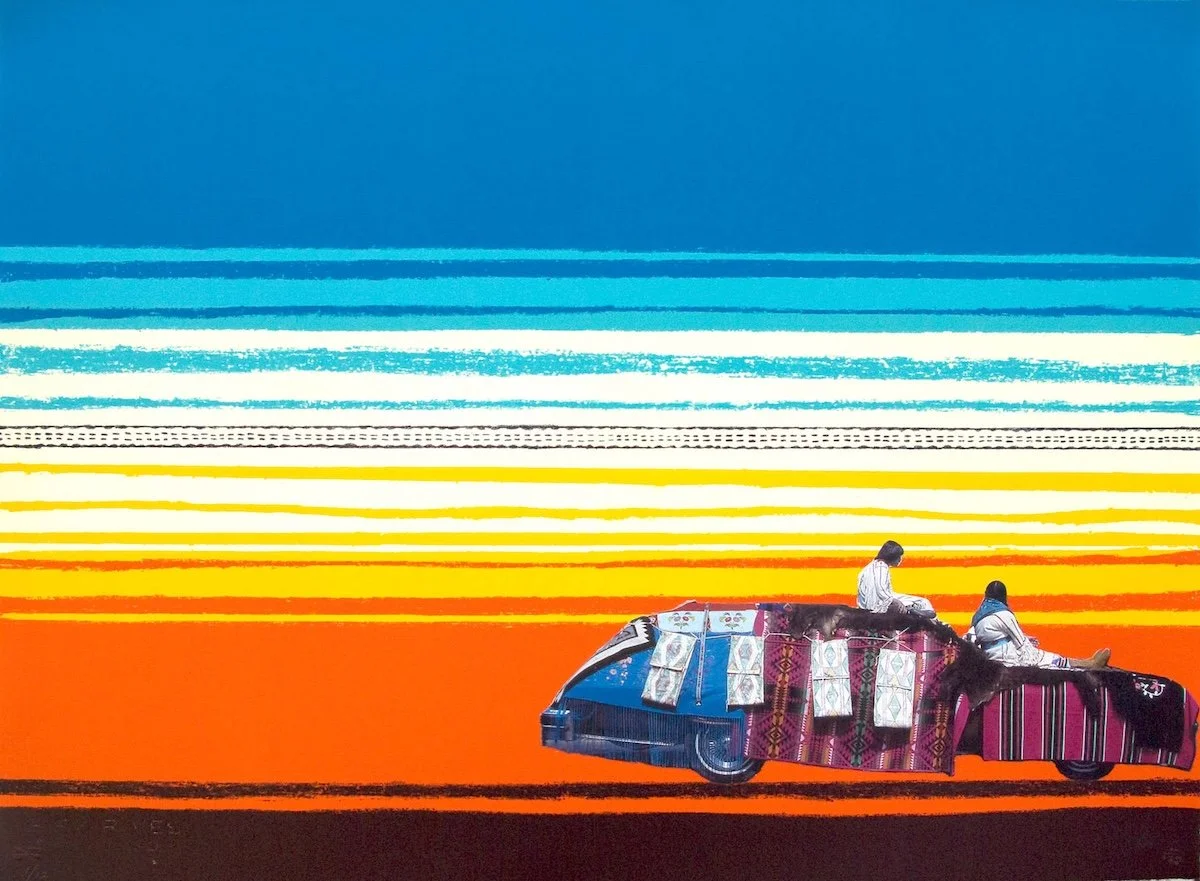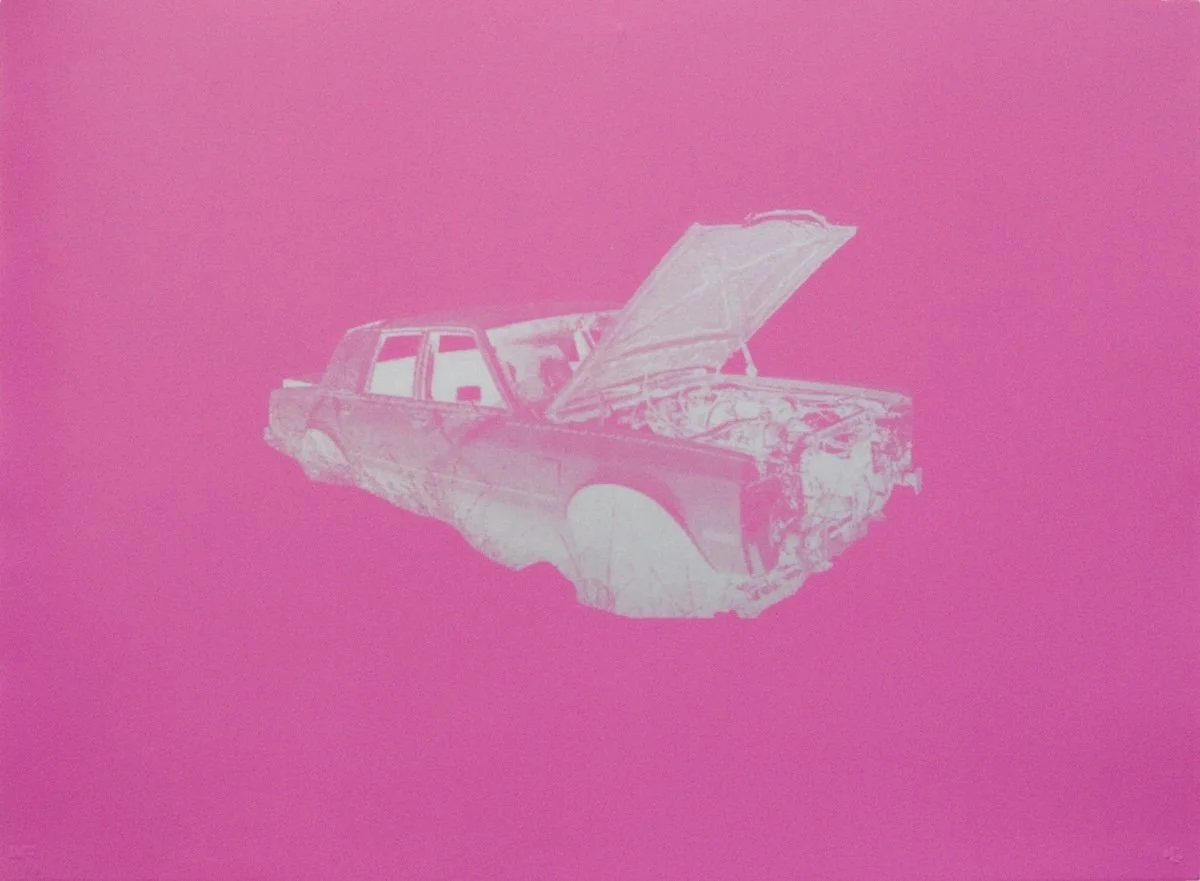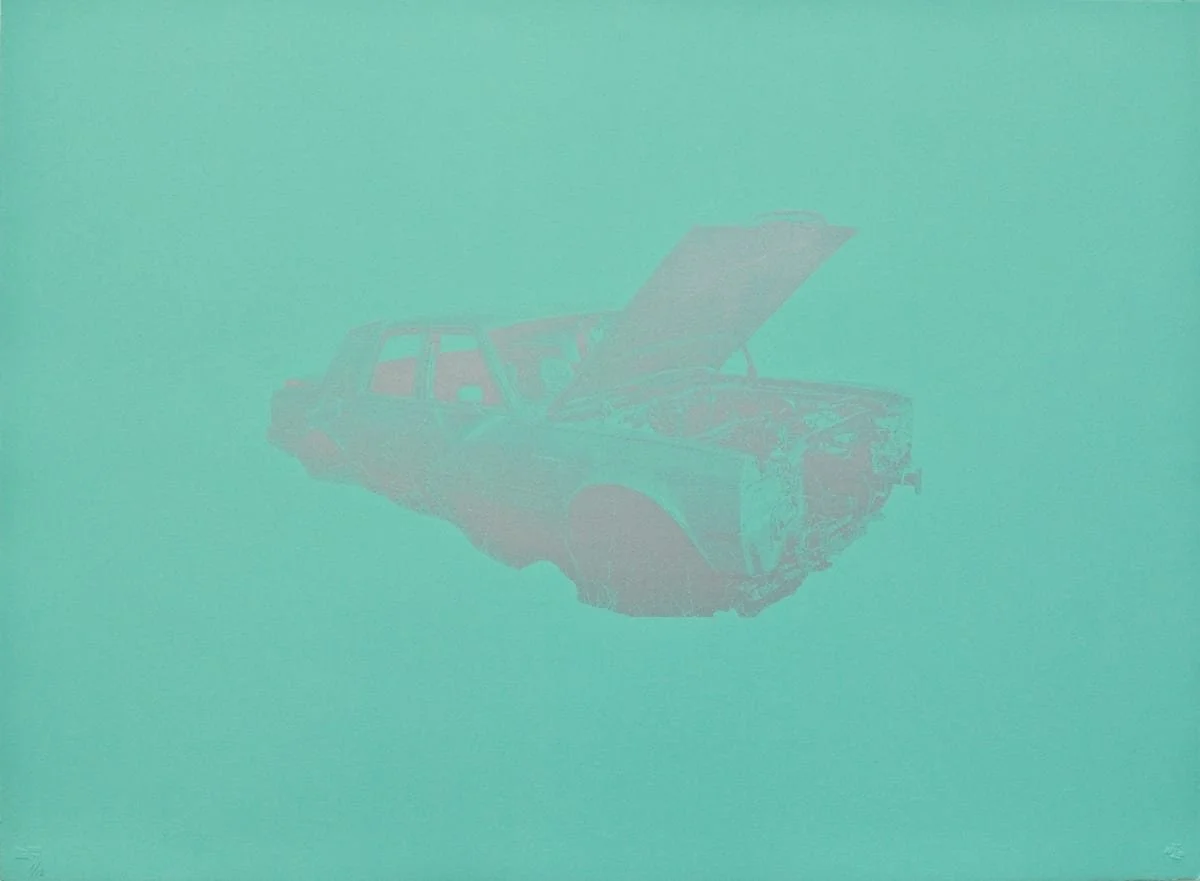Crow’s Shadow Institute of the Arts
Where Red Star Was Wounded, 2023
Nine-color lithograph
26 x 22 inches
Edition of 25
Where The Cranes Sit, 2023
Nine-color lithograph
26 x 22 inches
Edition of 25
Where Bears Dance, 2023
12-color lithograph
24 x 20 inches
Edition of 25
Where They Laid Down Yellow Blankets, 2023
Five-color lithograph
22 x 26 inches
Edition of 25
Dust, 2021
Three-color lithograph on Somerset Satin soft white, with archival pigment printed chine collé on mulberry paper
20.25 x 20 inches
Edition of 25
Her Dreams Are True (Julia Bad Boy), 2021
Six-color lithograph on Somerset Satin soft white, with archival pigment printed chine collé on mulberry paper
20.25 x 20 inches
Edition of 25
Four Generations, 2021
Six-color lithograph on Somerset Satin white, with archival pigment printed chine collé on mulberry paper
30.25 x 30 inches
Edition of 16
Apsáalooke Roses, 2016
Four-color lithograph with archival pigment ink photographs
18 x 26 inches
Edition of 12
Yakima or Yakama – Not For Me To Say, 2016
Three-color lithograph with chine-collé archival pigment ink photograph
24 x 40 inches
Edition of 20
iilaalée = car (goes by itself) + ii = by means of which + dáanniili = we parade, 2016
Nine-color lithograph with chine-collé archival pigment ink photographs
24 x 38 inches
Edition of 20
The (HUD), 2010
Two-color lithograph
30 x 22.375 inches
Edition of 12
enit, 2010
Six-color lithograph on paper with archival pigment ink photograph
22.375 x 30 inches
Edition of 12
Rez Car 1, 2010
Two-color lithograph
22.5 x 30 inches
Edition of 12
Rez Car 2, 2010
Two-color lithograph
22.5 x 30 inches
Edition of 12
Crow’s Shadow institute of the arts
Where Red Star Was Wounded, Where Bears Dance, Where The Cranes Sit, Where They Laid Down Yellow Blankets
These prints are part of an ongoing series exploring the social and material history of bishkisché. This Apsáalooke term is used to describe heirloom rawhide cases fabricated and decorated by the women of Indigenous tribes throughout North America, translating to “backpack for dogs to carry meat or grain.” Historically referred to as parfleche—a French phrase introduced during the colonial fur trade—in Western European scholarship, Red Star intends to use this series to restore the creative lineage and language of her Apsáalooke ancestry. A functional object used for transporting goods and possessions on horse across the Great Plains, each bishkisché features two painted panels with a mirrored pattern—a unique visual symbology invented by their maker. Growing up on the Crow Indian Reservation in Montana, Red Star recalls her grandmother with a creative project always in hand—perpetually sewing, beading, and drawing. While her matrilineal ancestors may not have described themselves as artists, they had robust artistic practices and established the aesthetic vocabulary of their tribal community—envisioning vibrant, geometric designs comprised of intersecting triangles, zig-zagging lines, and lean sequenced rectangles rendered in rich primary- toned pigments.
Dust, Her Dreams Are True (Julia Bad Boy), Four Generations
Part of a series of limited-edition prints handmade by Wendy Red Star over a period of five months during her third residency at Crow’s Shadow, these prints feature repeated photographic elements with portraits of Red Star’s family. Star Quilts were very precious items that were given away and shared at ceremonial rites: the quilt pattern, stars, and historical photos are all carriers of stories.
iilaalée = car (goes by itself) + ii = by means of which + dáanniili = we parade, Yakima or Yakama – Not For Me To Say, enit, Rez Car 1, Rez Car 2
Nearly 50,000 people attend the Crow Nation’s annual Crow Fair, including around 11,000 enrolled tribal members, almost 80 percent of the Crow tribe. Every family constructs a camp, and members of the Apsáalooke gather every morning during the weeklong celebration for a parade symbolizing the moving of camp, an action that expresses the deep-rooted cultural tradition of movement in Apsáalooke society. Families put on traditional dress and display their horses during rituals that recall the nineteenth-century migrations from summer to winter camps. These parades pass on traditions from horse culture to car culture, from buffalo days to reservation life—weaving each generation into the fabric of a living, resilient tribal Nation.
-
American Progress
The Anderson Collection at Stanford University, Stanford, CAHues
Hannah Traore Gallery, New York, NY -
Museum of Contemporary Photography at Columbia College Chicago, Chicago, IL
